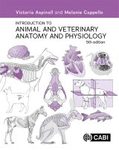Field / Identification Guide Identification Key
By: James Kalema(Author), Alan Hamilton(Author)
277 pages, 37 plates with 446 b/w line drawings; 8 b/w photos, 1 b/w map
![Field Guide to the Forest Trees of Uganda Field Guide to the Forest Trees of Uganda]()
Click to have a closer look
About this book
Contents
Customer reviews
Biography
Related titles
About this book
Field Guide to the Forest Trees of Uganda is a guide for the identification of the indigenous forest trees of Uganda. It will be useful for those who wish to contribute towards the conservation of the forests or to plant indigenous trees. Information is provided on how to propagate and cultivate about 80 of the most valuable species.
Indigenous trees provide numerous resources useful for welfare and development. They include many types of timber and non-timber forest products, such as craft materials, foods and medicines. The proximity of indigenous forest helps to moderate the local climate, making it more suitable for agriculture. Indigenous forests protect springs, therefore safeguarding water supplies more effectively than exotic trees such as pines and eucalyptus.
All 450 known indigenous tree species from the forests are included. Both scientific and local names are provided, the latter in 21 languages. Local names facilitate access to knowledge and values traditionally attached to the species, useful when planning pathways of development firmly rooted in local culture.
The book will be invaluable for botanists, foresters, rural development workers and members of the general public concerned about contributing to conservation and sustainable development in Uganda. Many of the species grow in neighbouring countries, so the book has relevance there too.
Contents
Part 1: The forests and their trees
Part 2: How to identify the trees
Part 3: Keys to the species
Part 4: Descriptions of the species
Part 5: Glossary
Part 6: Further information for the field worker
Part 7: The indigenous languages of Uganda
Part 8: References
Part 9: Indexes of vernacular and trade names
Part 10: Index of scientific names
Customer Reviews
Biography
Jimmy Kalema graduated from Makerere University in 1994 with a doctorate in environment and natural resource management and then worked as a national park warden in Uganda before securing a position as a lecturer in botany at Makerere. He was in charge of the herbarium and botanical garden of the university from 2008 to 2017, becoming an associate professor in 2018. His research has included the assessment of priority places and species for plant conservation in Uganda and studies of cycads, carnivorous plants and Acanthaceae. He is one of the authors of a conservation checklist for Ugandan trees. He helped design Uganda’s National Biodiversity Strategy and Action Plan and is a member of the East Africa Plant Red List Authority and Global Tree Specialist Group (IUCN). He was the principal investigator in a project to establish how the sites used in oil and gas exploration in Uganda can be ecologically restored. His publications include 14 contributed book chapters and 25 scientific papers in peer-reviewed journals.
Alan Hamilton has been a lecturer in botany, geography and environmental science, variously in the UK and Uganda. His research has been mainly on the environmental history of East Africa during the Quaternary, for which he was awarded a Doctorate in Science from the University of Cambridge. He served as Plants Conservation Officer for WWF-International (1989-2004) and as Plants Conservation and Livelihoods Officer for Plantlife International (2005-2008), in which roles he was responsible for many plant conservation projects around the world. He was one of the originators and the overall manager of the People and Plants Initiative (PPI) of WWF, UNESCO and the Royal Botanic Gardens, Kew, which aimed to increase global capacity in applied ethnobotany. One of his duties in PPI was to organise publication and distribution of a number of manuals on plant conservation in three languages (English, Spanish and Chinese). He is the recipient of an Honorary Doctorate from the Chinese Academy of Sciences and remains actively involved in conservation in China. He is the author of eight scientific books and about 100 scientific papers.
Field / Identification Guide Identification Key
By: James Kalema(Author), Alan Hamilton(Author)
277 pages, 37 plates with 446 b/w line drawings; 8 b/w photos, 1 b/w map








































